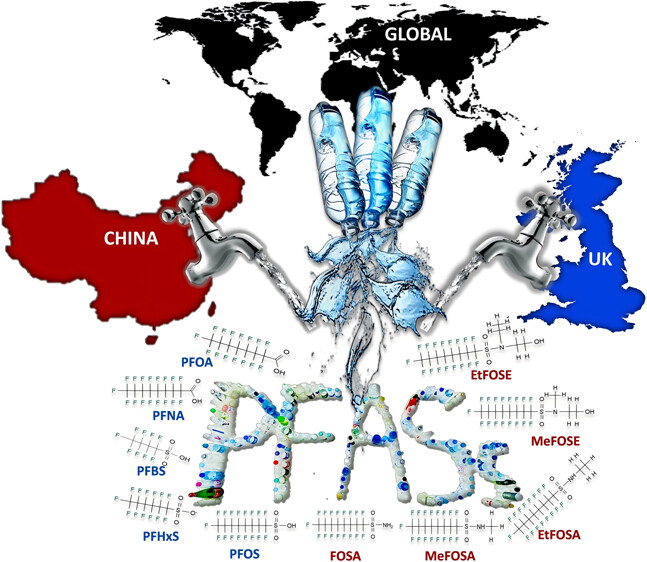By CASC4DE October 31, 2024

A groundbreaking study published on October 17, 2024 and led by research teams from the University of Birmingham and Shenzhen University, under the direction of Stuart Harrad and Yi Zhen, has revealed alarming levels of PFAS (per- and polyfluoroalkyl substances), often called “forever chemicals,” in bottled and tap water worldwide. These findings add to growing concerns about the persistence and health risks associated with PFAS contamination in drinking water.
🔬 The extensive study focused on ten PFAS chemicals in 167 water samples, including 112 bottled water samples (both still and sparkling) from 87 brands spanning 15 countries across Asia, Europe, North America, and Oceania. The samples included 88 plastic and 24 glass bottles to capture a comprehensive view of potential PFAS contamination in bottled water. Additionally, 55 tap water samples collected in 2019-2020 from households in Birmingham, neighboring UK cities, and Shenzhen, China, provided insight into municipal water systems’ PFAS levels in different global regions.
📌 Key Findings:
- PFAS were detected in 99% of the samples analyzed, pointing to an alarming prevalence of these chemicals in drinking water supplies across the globe.
- The high frequency of PFAS detection highlights an urgent need for international action and regulations to ensure safe drinking water for communities everywhere.
This research underscores that PFAS contamination is a global concern with significant implications for public health and water safety. As PFAS are known to be highly persistent and difficult to break down, they represent a critical challenge for water quality worldwide. The findings published in ACS ES&T Water emphasize the importance of regulatory measures to reduce PFAS exposure and safeguard public health on a global scale.
👀 Find out more in the original article!
Illustration credit to the article the authors (Chuanzi Gao et al.) and the publisher ACS EST Water 2024.




